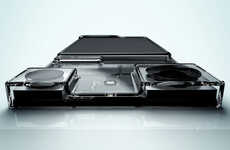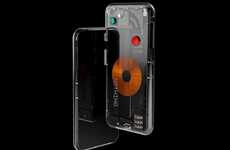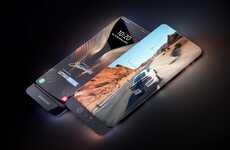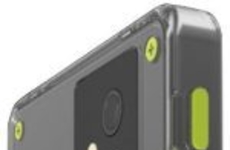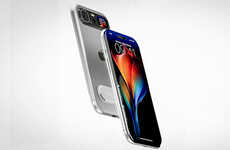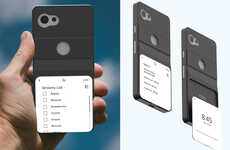
'Alo' is a Future Smartphone Concept Has a Vocalized Interface
Michael Hemsworth — January 31, 2017 — Tech
References: jeromeolivet & ubergizmo
The 'Alo' future smartphone concept identifies how we could anticipate smartphone design to shift as we move further into the future with the device at the epicenter.
The 'Alo' smartphone does away with the screen in a bid to make the device used via a vocalized interface that can be spoken to and that will read pertinent content to users.
The 'Alo' can be spoken to in order to draft emails and texts, and also offers a 3D hologram projector that can be used for multimedia purposes or to visually see a message that has come through.
The 'Alo' future smartphone concept is the design work of France-based designers Philippe Starck and Jerome Olivet. The icy design could mark a shift in smartphone design away from bigger devices with larger screens to a phone with no screen space.
The 'Alo' smartphone does away with the screen in a bid to make the device used via a vocalized interface that can be spoken to and that will read pertinent content to users.
The 'Alo' can be spoken to in order to draft emails and texts, and also offers a 3D hologram projector that can be used for multimedia purposes or to visually see a message that has come through.
The 'Alo' future smartphone concept is the design work of France-based designers Philippe Starck and Jerome Olivet. The icy design could mark a shift in smartphone design away from bigger devices with larger screens to a phone with no screen space.
Trend Themes
1. Screenless Smartphones - The future of smartphones may be in screenless design and voice-controlled interfaces, creating disruptive innovation opportunities for speech recognition technology.
2. Vocalized Interfaces - Voice-controlled interfaces may become the norm in smartphone design and could lead to disruptive innovation opportunities in natural language processing and voice recognition technology.
3. Holographic Projections - Incorporating 3D hologram projectors into smartphones may become more common, creating disruptive innovation opportunities for the projection technology industry.
Industry Implications
1. Consumer Electronics - This shift in smartphone design could create disruptive innovation opportunities for companies in the consumer electronics industry who can adapt to the new trend.
2. Speech Recognition Technology - Screenless smartphones with voice-controlled interfaces could create disruptive innovation opportunities for companies in the speech recognition technology industry to refine their products and services.
3. Projection Technology - The integration of 3D hologram projectors in smartphones opens up disruptive innovation opportunities for companies in the projection technology industry to develop new and innovative products.
5.5
Score
Popularity
Activity
Freshness

